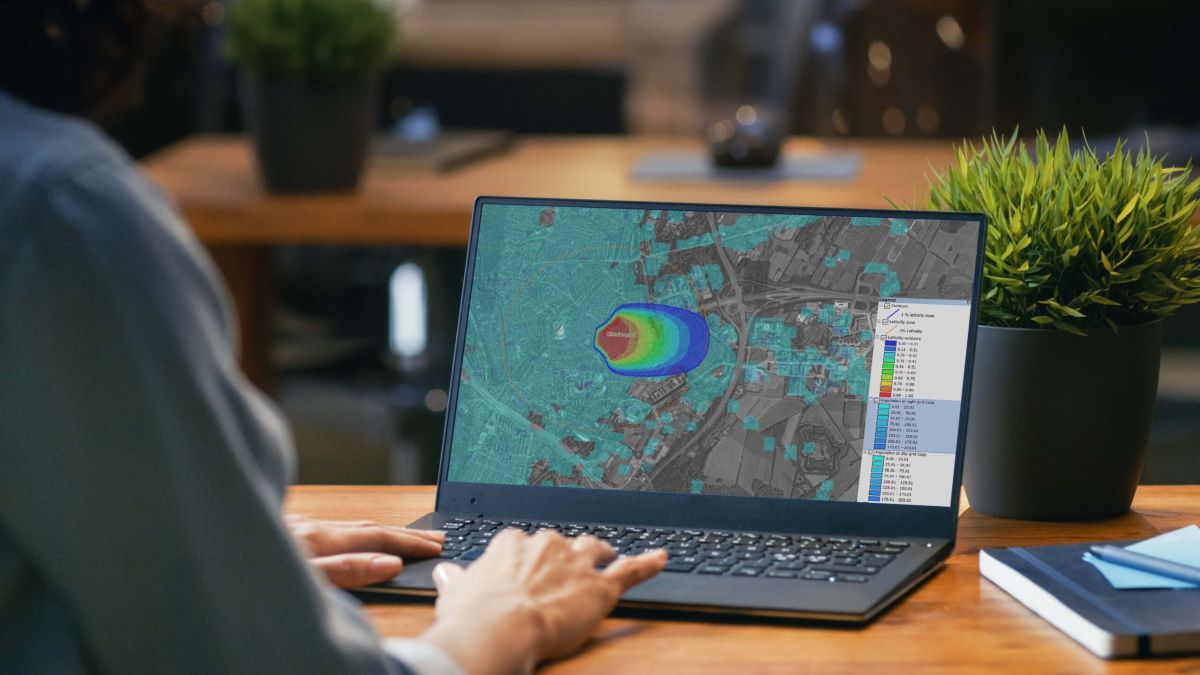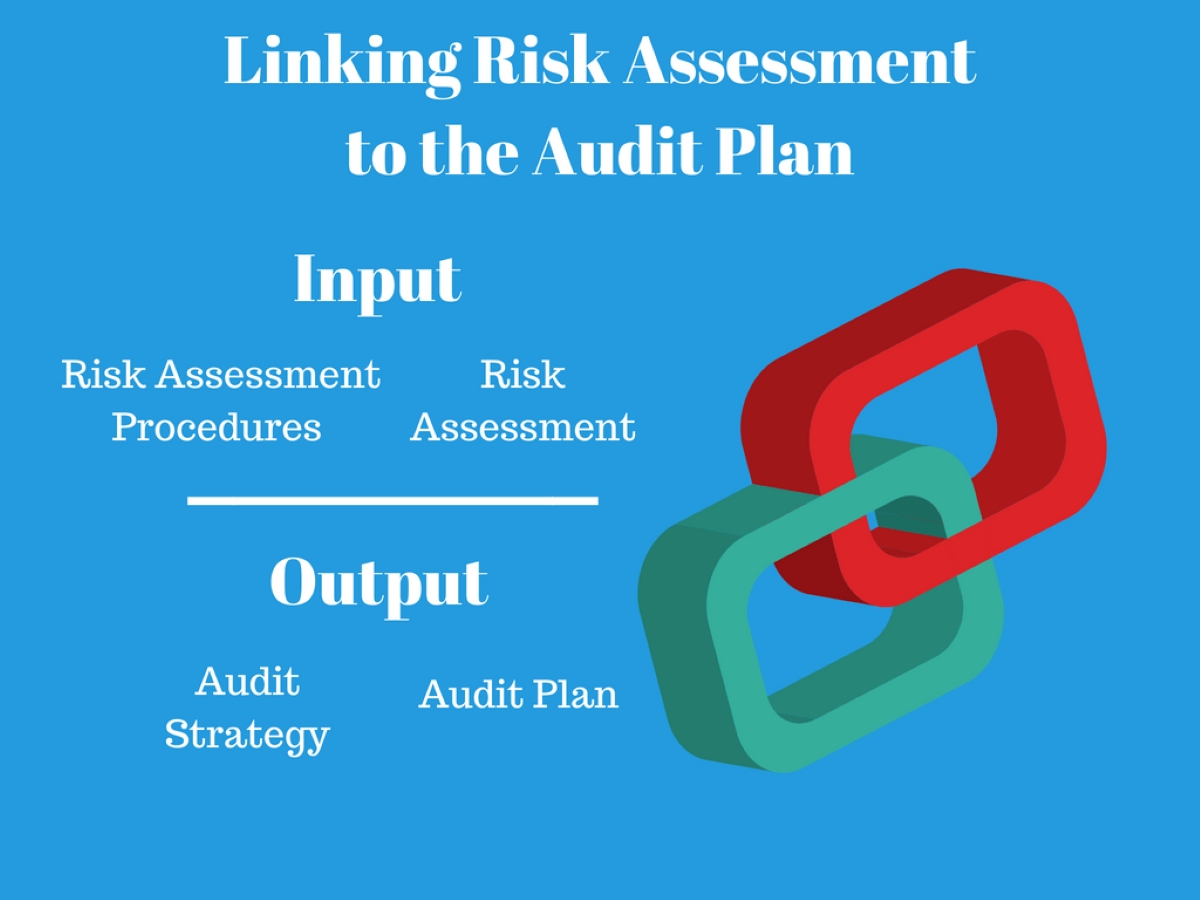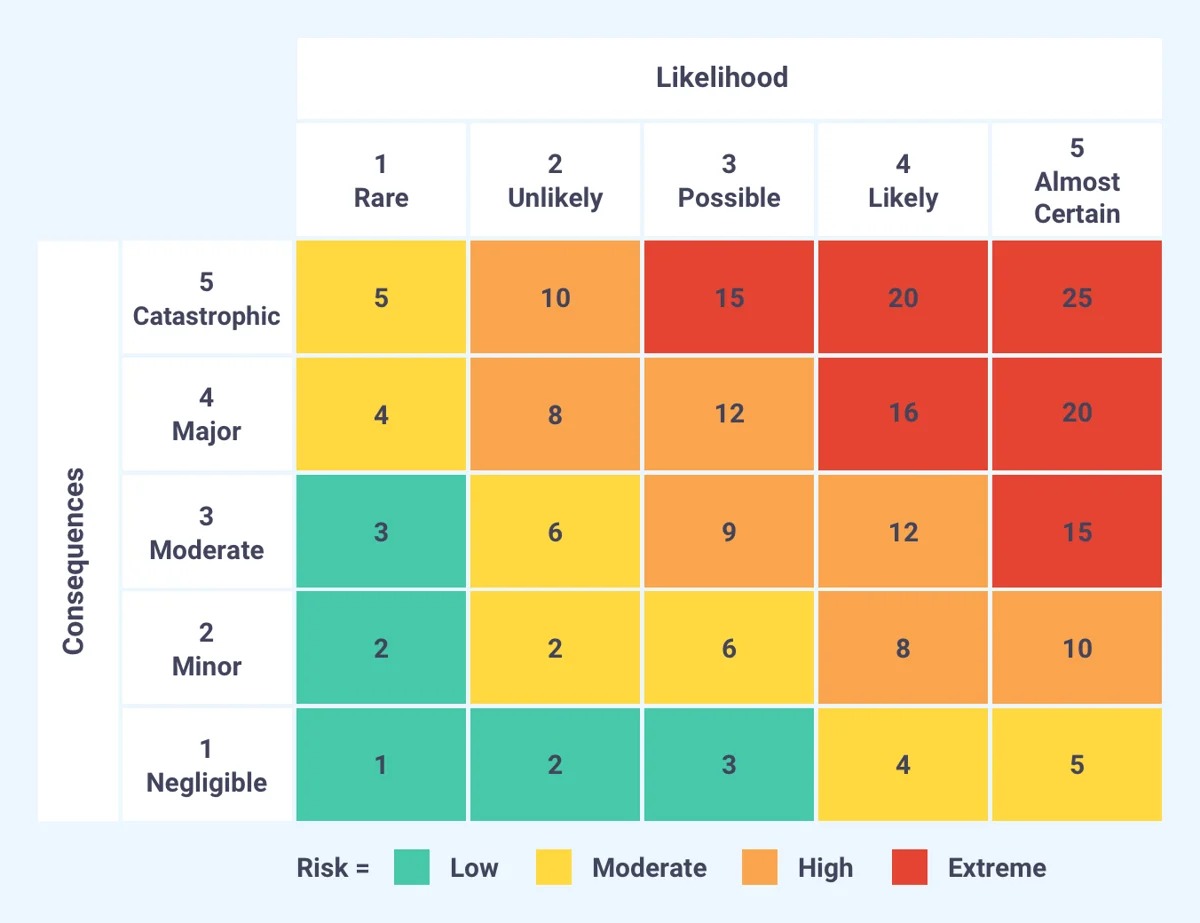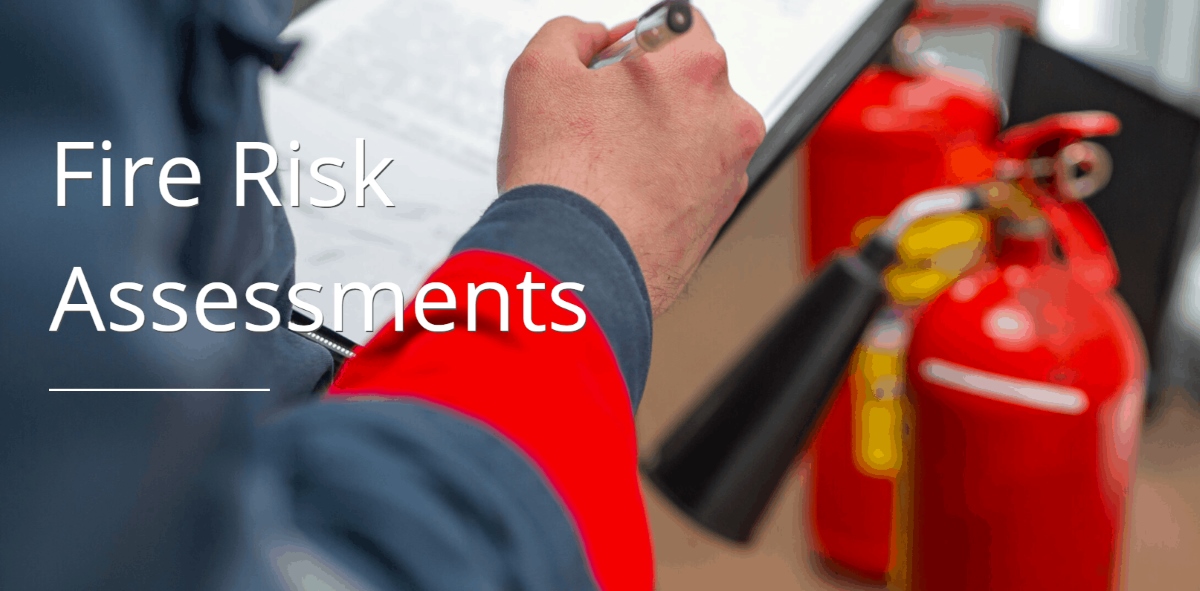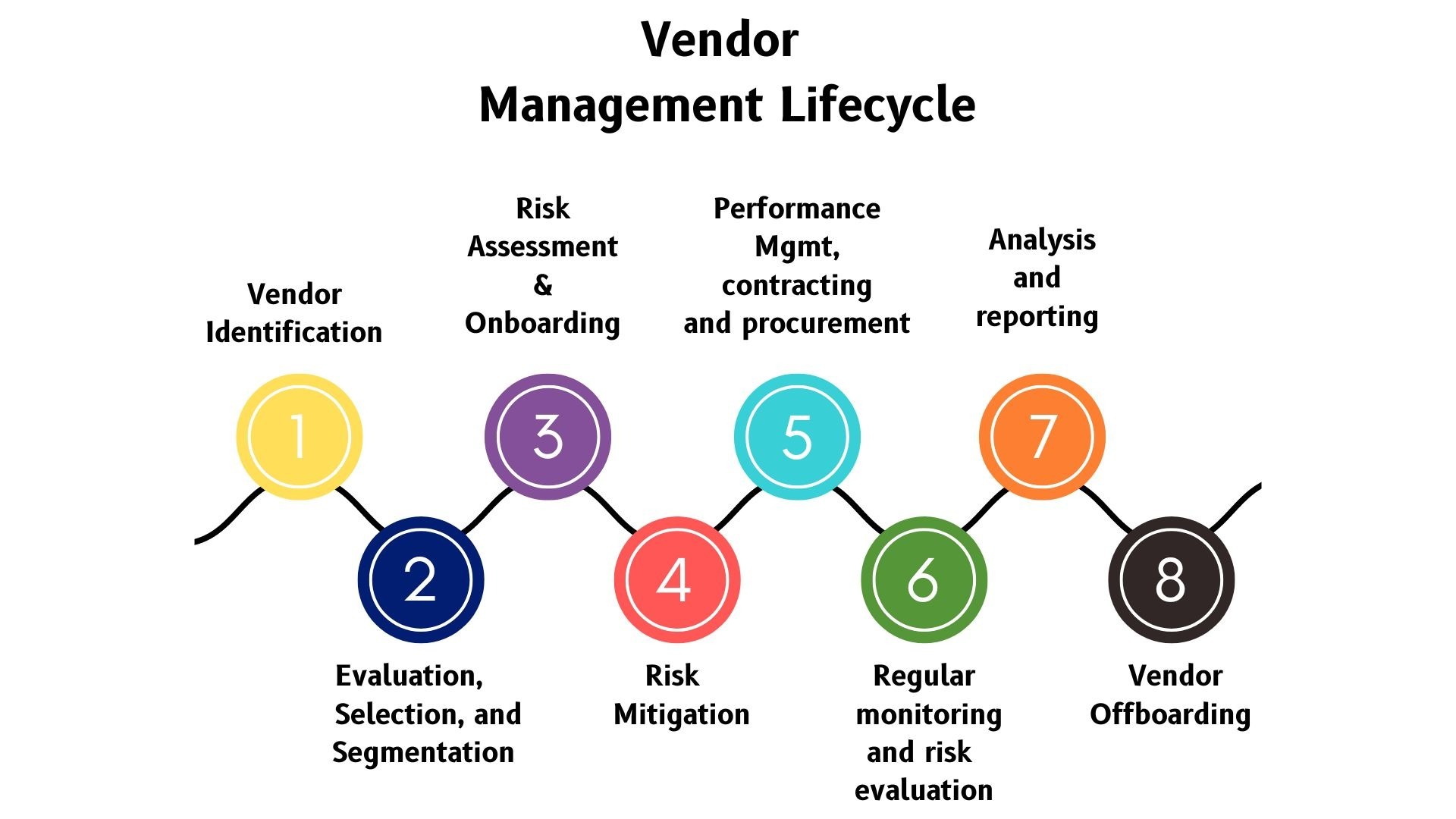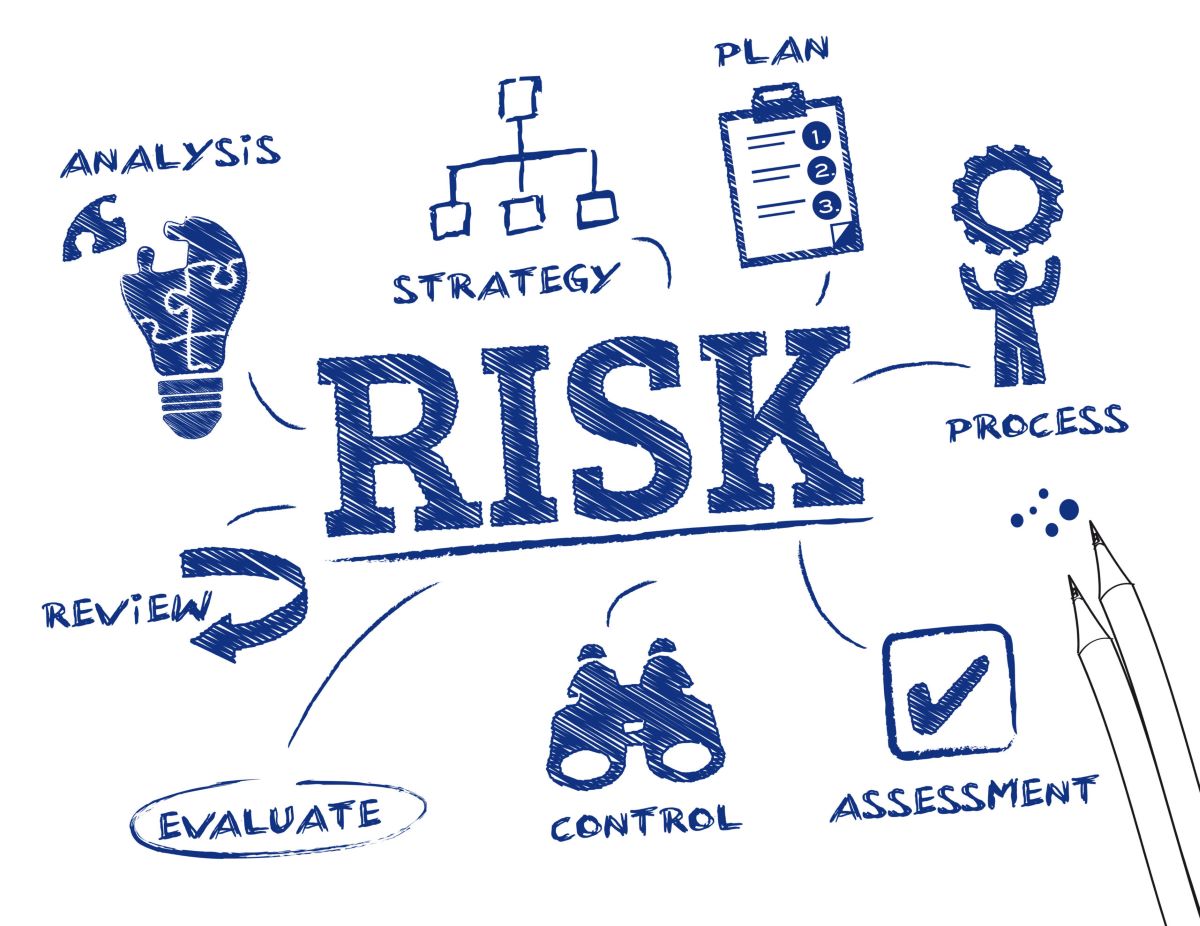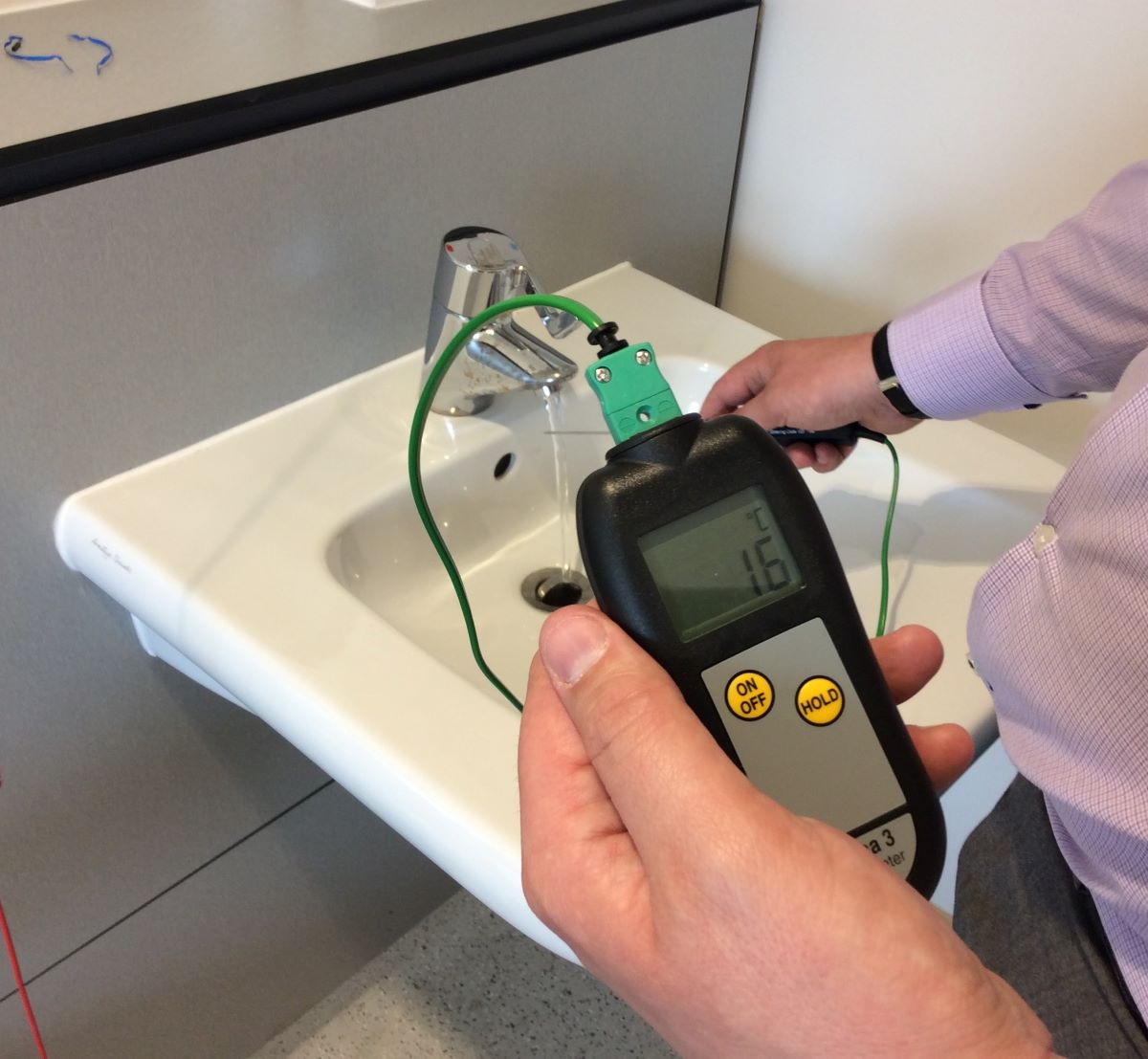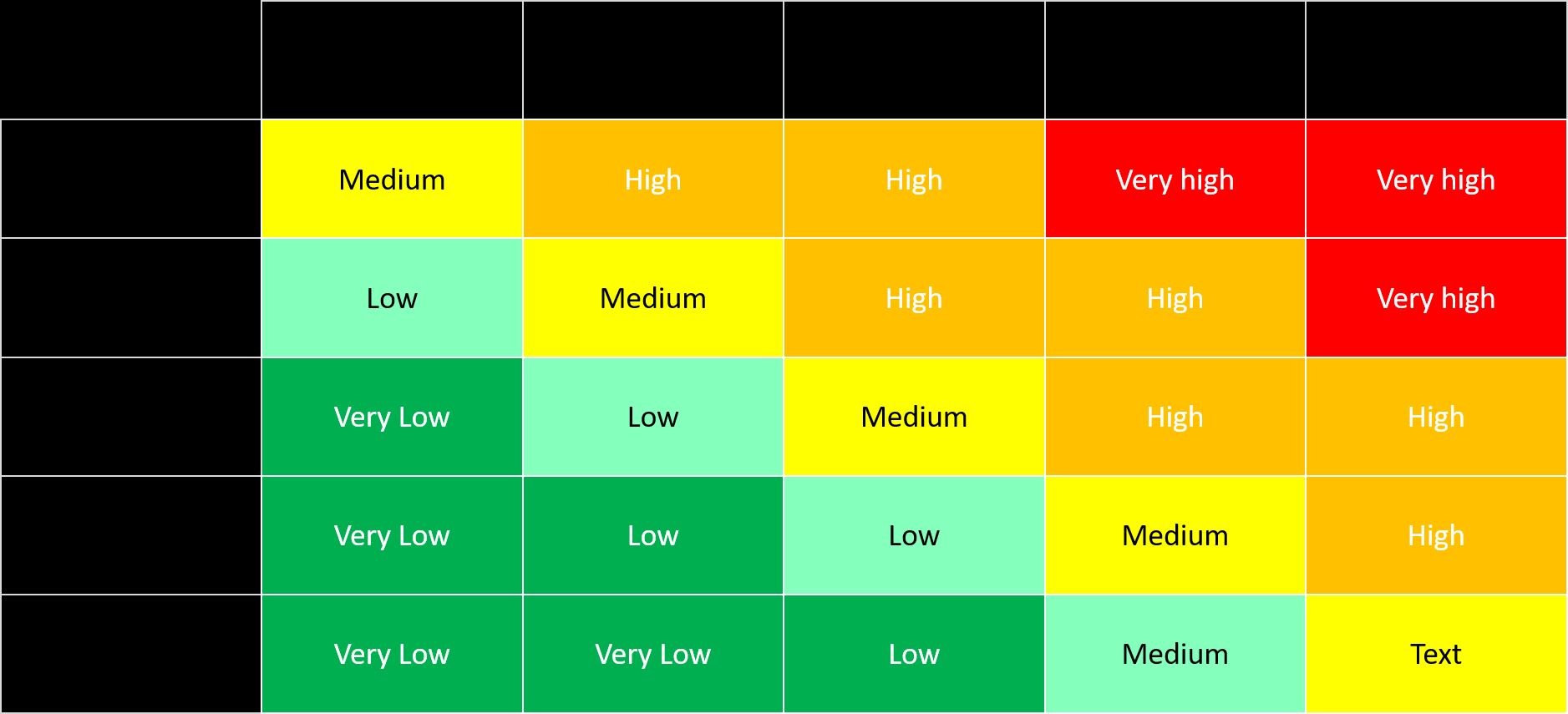

Finance
What Is An Environmental Risk Assessment
Published: January 15, 2024
Learn about the importance of conducting financial environmental risk assessments for effective management and mitigation of potential hazards in various industries.
(Many of the links in this article redirect to a specific reviewed product. Your purchase of these products through affiliate links helps to generate commission for LiveWell, at no extra cost. Learn more)
Table of Contents
- Introduction
- Definition of Environmental Risk Assessment
- Purpose of Environmental Risk Assessment
- Steps in Environmental Risk Assessment Process
- Identification of Hazards
- Assessment of Exposure
- Evaluation of Risks
- Development of Risk Management Strategies
- Implementation of Risk Management Strategies
- Monitoring and Review of Risk Management Strategies
- Importance of Environmental Risk Assessment
- Examples of Environmental Risk Assessments
- Conclusion
Introduction
Environmental risk assessment plays a vital role in identifying and managing potential hazards that may pose a threat to the environment. As human activities continue to impact the planet, it becomes increasingly important to evaluate and mitigate the risks associated with these activities. Whether it’s the release of pollutants into the air, water, or soil, or the destruction of natural habitats, an environmental risk assessment provides a systematic approach to understanding the potential harm caused by these factors.
Environmental risk assessment is a multidisciplinary field that combines elements of environmental science, toxicology, and risk management. It involves the identification, evaluation, and management of potential risks to the environment and is often carried out to support the decision-making process for industries, government agencies, and other organizations.
The goal of environmental risk assessment is to provide a comprehensive understanding of the potential impacts that human activities may have on the environment. By assessing these risks, it becomes possible to develop effective strategies and measures to minimize or mitigate the negative consequences.
Environmental risk assessment is a proactive approach that focuses on prevention and precaution. It involves a thorough examination of potential hazards, an assessment of the exposure to these hazards, and an evaluation of the associated risks. The information gathered from this assessment is then used to develop and implement appropriate risk management strategies, which are continuously monitored and reviewed to ensure their effectiveness.
In the following sections, we will delve into the definition, purpose, and steps involved in an environmental risk assessment. We will also highlight the importance of this process and provide examples of real-world environmental risk assessments. Through a deeper understanding of environmental risk assessment, we can work towards a more sustainable and environmentally conscious future.
Definition of Environmental Risk Assessment
Environmental risk assessment is the process of systematically evaluating potential hazards and their associated risks to the environment. It involves identifying and analyzing factors that may harm ecosystems, natural resources, and human health, and then implementing strategies to manage and mitigate those risks.
At its core, environmental risk assessment is a scientific and objective approach to understanding the potential harm that human activities may cause to the environment. It takes into account a range of factors, including the type and magnitude of hazardous substances, the pathways through which these substances are released or transported, and the potential receptors, such as ecosystems, species, or human populations, that may be affected.
The assessment goes beyond simply identifying hazards; it also considers factors such as exposure levels, vulnerability of ecosystems or human populations, and the potential consequences of exposure. This holistic approach allows for a comprehensive evaluation of the potential risks and enables decision-makers to develop informed strategies to reduce or eliminate those risks.
An environmental risk assessment typically involves several key steps, including hazard identification, exposure assessment, risk characterization, and risk management. These steps are designed to gather and analyze data, evaluate the likelihood and severity of potential risks, and develop and implement strategies to minimize those risks.
In order to conduct an effective environmental risk assessment, it is important to utilize a multidisciplinary approach that incorporates expertise from various fields such as environmental science, toxicology, ecology, and risk management. This interdisciplinary collaboration ensures a comprehensive understanding of the potential risks and ensures that appropriate strategies are developed to address them.
Overall, environmental risk assessment plays a critical role in guiding decision-making processes related to environmental protection and sustainable development. It provides a framework for identifying and understanding potential risks and helps to inform the development of policies, regulations, and management strategies that aim to safeguard the environment and human well-being.
Purpose of Environmental Risk Assessment
The purpose of conducting an environmental risk assessment is to systematically identify and evaluate potential hazards and associated risks to the environment. This process serves several important purposes, including:
- Identification of Hazards: Environmental risk assessment helps to identify and assess the various hazards that may exist in a particular environment. These hazards can include pollutants, contaminants, physical disturbances, and other threats to ecosystems, natural resources, and human health.
- Evaluation of Exposure: By assessing exposure pathways and levels, an environmental risk assessment determines how organisms and ecosystems come into contact with hazardous substances. This evaluation takes into account factors such as the source of the hazard, the pathways through which it is transported, and the potential receptors that may be impacted.
- Evaluation of Risks: The assessment of risks involves analyzing the likelihood and severity of potential harm to the environment or human health. It considers factors such as the toxicity of a substance, the vulnerability of ecosystems or populations, and the magnitude and duration of exposure. This evaluation helps to prioritize risks and determine the appropriate level of concern.
- Development of Risk Management Strategies: Once the risks have been identified and evaluated, an environmental risk assessment guides the development of effective risk management strategies. These strategies aim to minimize or eliminate potential risks and can include measures such as pollution prevention, habitat restoration, waste management, and the implementation of best practices in industries and activities that may pose risks.
- Implementation of Risk Management Strategies: An environmental risk assessment provides a framework for implementing risk management strategies and measures. This involves putting in place the necessary policies, regulations, monitoring programs, and enforcement mechanisms to ensure that the identified risks are adequately managed and mitigated.
- Monitoring and Review of Risk Management Strategies: Environmental risk assessments also play a key role in the ongoing monitoring and review of risk management strategies. By continuously evaluating the effectiveness of implemented measures, decision-makers can identify any gaps or areas for improvement and make necessary adjustments to ensure the protection of the environment and human health.
The ultimate purpose of conducting an environmental risk assessment is to inform decision-making processes and promote sustainable development. By identifying and evaluating potential hazards and risks, and implementing effective risk management strategies, we can work towards minimizing the negative impacts of human activities on the environment and ensuring the long-term well-being of ecosystems and society.
Steps in Environmental Risk Assessment Process
The process of environmental risk assessment involves several key steps, each of which plays a crucial role in systematically evaluating and managing potential hazards and associated risks. These steps provide a structured framework for conducting a comprehensive assessment. The typical steps in the environmental risk assessment process include:
- Identification of Hazards: The first step is to identify the different hazards that may pose a risk to the environment. This includes examining potential sources of pollution, contaminants, physical disturbances, or other threats to ecosystems, natural resources, and human health.
- Assessment of Exposure: Once the hazards are identified, the next step is to evaluate how organisms, ecosystems, or human populations may come into contact with these hazards. This involves assessing exposure pathways, such as air, water, or soil, and determining the levels of exposure that may occur.
- Evaluation of Risks: In this step, the likelihood and severity of potential harm are analyzed to determine the level of risk associated with each hazard. Factors such as the toxicity of the hazard, the vulnerability of ecosystems or populations, and the magnitude and duration of exposure are taken into account during this evaluation.
- Development of Risk Management Strategies: Based on the evaluation of risks, appropriate risk management strategies and measures are developed. This involves identifying and implementing actions that can minimize or eliminate potential risks. Strategies may include pollution prevention, habitat restoration, waste management, and the establishment of best practices in industries and activities.
- Implementation of Risk Management Strategies: Once risk management strategies are developed, they are put into action. This step involves implementing policies, regulations, monitoring programs, and enforcement mechanisms to ensure that the identified risks are adequately managed and mitigated.
- Monitoring and Review: The final step in the environmental risk assessment process is ongoing monitoring and review of the implemented risk management strategies. This allows for the evaluation of their effectiveness and the identification of any necessary modifications or improvements. Regular monitoring ensures that risks are continuously assessed and managed to protect the environment and human health.
It is important to note that the steps outlined above are not always linear and may involve iterative processes. Environmental risk assessment is often an ongoing and dynamic process, adapting to new information and evolving risks. By following these steps, decision-makers can systematically evaluate and manage potential hazards, leading to more informed and sustainable decisions for protecting the environment.
Identification of Hazards
The identification of hazards is a crucial step in the environmental risk assessment process. It involves identifying and characterizing potential sources of harm or risks that may impact the environment, ecosystems, natural resources, and human health. By understanding the hazards present in a particular environment, decision-makers can prioritize and assess the associated risks more effectively.
There are various types of hazards that can be identified during this step. Some common examples include:
- Chemical Hazards: These hazards include pollutants, contaminants, and toxic substances that have the potential to harm ecosystems and human health. They can arise from industrial activities, agriculture, transportation, or natural processes.
- Physical Hazards: Physical hazards refer to physical disturbances or events that can cause harm to the environment or organisms. Examples include habitat destruction, land degradation, natural disasters (such as floods or earthquakes), and infrastructure development.
- Biological Hazards: Biological hazards involve living organisms or agents that can pose a risk to the environment or human health. This includes invasive species, diseases, pests, or genetically modified organisms.
- Radiological Hazards: Radiological hazards encompass ionizing radiation that can be released from sources such as nuclear power plants, hospitals, research facilities, or radioactive waste sites. These hazards can have long-term impacts on ecosystems and human health.
The identification of hazards often involves conducting thorough research, collecting data, and analyzing information from various sources. This can include scientific studies, environmental monitoring, historical records, expert consultations, and stakeholder engagement. Additionally, technologies such as remote sensing, geographic information systems (GIS), and data analysis tools can assist in identifying hazards and understanding their potential impacts.
During the identification stage, it is crucial to consider both acute and chronic hazards. Acute hazards refer to immediate and severe risks that can have sudden, detrimental impacts. Chronic hazards, on the other hand, involve long-term exposure to hazards that may lead to health effects or ecosystem degradation over an extended period of time.
The identification of hazards is an ongoing process that should be regularly reviewed and updated as new information becomes available. This ensures that emerging risks are identified, assessed, and effectively managed. By accurately identifying hazards, decision-makers can move forward in the environmental risk assessment process, assessing exposure pathways, evaluating risks, and developing appropriate risk management strategies to safeguard the environment and promote sustainable development.
Assessment of Exposure
The assessment of exposure is a critical step in the environmental risk assessment process. It involves evaluating how organisms, ecosystems, or human populations may come into contact with the identified hazards. This assessment helps to determine the pathways through which the hazards can be transported and the potential levels of exposure that may occur.
During the assessment of exposure, several factors are considered:
- Pathways of Exposure: The assessment examines the different routes through which organisms or populations may be exposed to the hazards. This can include air, water, soil, food, or direct contact with contaminated surfaces.
- Exposure Duration: The length of time an organism or population is exposed to the hazard is an important consideration. It helps determine the potential cumulative effects and the degree of impact on the environment or human health.
- Environmental Fate and Transport: Understanding the behavior, fate, and transport of the hazards in the environment is crucial. This includes analyzing how the hazards interact with air, water, soil, or biota and how they are dispersed or transported within ecosystems.
- Species or Population Vulnerability: Different species or populations may have varying levels of vulnerability to the hazards. The assessment takes into account factors such as age, health, life stage, reproductive capacity, and ecological characteristics to determine the potential impacts.
- Geographical Considerations: The assessment considers the geographical distribution and spatial patterns of exposure. This includes identifying areas of potential high concentration or frequency of exposure, sensitive ecosystems, or regions with vulnerable populations.
To conduct an accurate assessment of exposure, data collection and analysis are essential. This may involve monitoring environmental media, measuring contaminant levels, conducting field studies, and utilizing modeling techniques to estimate exposure pathways and levels.
The assessment of exposure also accounts for different exposure scenarios. These scenarios can be based on specific activities, such as industrial processes or agricultural practices, or on potential incidents or accidents that may lead to exposure. By considering these scenarios, decision-makers can better understand the range and variability of exposure levels and develop appropriate risk management strategies.
The assessment of exposure is an iterative process, where new information and data are continuously integrated, reviewed, and refined. It helps decision-makers evaluate the potential risks associated with the identified hazards and inform the subsequent steps of risk characterization and management.
Through a comprehensive assessment of exposure, decision-makers can determine the potential impacts on ecosystems and human health, prioritize risks, and develop effective strategies to mitigate or eliminate exposure pathways, ensuring the protection and preservation of the environment.
Evaluation of Risks
The evaluation of risks is a crucial step in the environmental risk assessment process. It involves analyzing the likelihood and severity of potential harm to the environment, ecosystems, natural resources, and human health. This evaluation helps decision-makers prioritize risks, allocate resources effectively, and develop appropriate risk management strategies.
During the evaluation of risks, several key factors are considered:
- Likelihood: The assessment evaluates the probability or likelihood of the identified hazards causing harm. This includes considering the frequency and intensity of exposure, the stability and persistence of the hazard in the environment, and the potential for accidents or incidents.
- Severity: The severity of the potential impacts is assessed by considering the magnitude and extent of the harm that could result from exposure to the hazards. This includes evaluating the toxicity of the hazard, the vulnerability of ecosystems or populations, and the potential for long-term or irreversible effects.
- Exposure-Response Relationship: The evaluation examines the relationship between exposure to the hazards and the likelihood or severity of harm. This involves considering quantitative data, such as dose-response curves, and qualitative information, such as expert opinions or epidemiological studies.
- Risk Characterization: The assessment combines the likelihood and severity of the potential risks to characterize the overall level of risk associated with each hazard. This allows decision-makers to prioritize risks based on their significance and the potential for harm.
- Uncertainty and Variability: The evaluation acknowledges the inherent uncertainty and variability in environmental risk assessment. This includes recognizing gaps in data or knowledge, understanding the limitations of models or predictions, and integrating uncertainty analysis to account for the range of potential outcomes.
The evaluation of risks also takes into account the context and specific circumstances of the environment and the potential receptors. This may include considering the sensitivity and resilience of ecosystems, the presence of protected areas or threatened species, or the vulnerability of human populations, especially those in disadvantaged or marginalized communities.
By conducting a comprehensive evaluation of risks, decision-makers can prioritize actions and develop appropriate risk management strategies. This includes identifying critical areas for intervention, allocating resources effectively, and implementing measures to minimize or eliminate the identified risks. The evaluation also enables ongoing monitoring and review to assess the effectiveness of the implemented risk management strategies.
It is important to note that risk evaluation is a dynamic process that should be regularly updated as new information and scientific advancements emerge. This allows for continuous improvement in the understanding and management of risks, ensuring the protection and preservation of the environment and human well-being.
Development of Risk Management Strategies
The development of risk management strategies is a crucial step in the environmental risk assessment process. Once the hazards and associated risks have been identified and evaluated, decision-makers can develop strategies and measures to minimize or eliminate those risks and ensure the protection of the environment and human health.
The development of risk management strategies involves several key considerations:
- Hierarchy of Controls: The strategies aim to follow a hierarchy of controls, starting with eliminating or minimizing the hazards at the source. This can include implementing pollution prevention measures, adopting cleaner technologies, or enhancing industrial processes. If hazards cannot be completely eliminated, strategies may focus on engineering controls, administrative controls, or personal protective equipment to reduce exposure.
- Best Available Technologies and Practices: The development of risk management strategies embraces the use of best available technologies and practices that are effective in mitigating the identified risks. This may involve adopting industry-specific standards and guidelines, implementing environmentally friendly processes, or utilizing innovative technologies to reduce or eliminate hazards.
- Stakeholder Engagement: The strategies are developed through inclusive and participatory processes that involve engaging relevant stakeholders such as government agencies, industry representatives, environmental experts, and affected communities. Stakeholder input helps ensure that the strategies are well-informed, practical, and socially acceptable.
- Integrated Approach: Risk management strategies are designed to take an integrated approach that considers the multidimensional nature of environmental risks. This involves addressing ecological, social, and economic factors to achieve sustainable outcomes. For example, strategies may encompass biodiversity conservation, climate change adaptation, and equitable distribution of benefits and costs.
- Legal and Regulatory Frameworks: The development of risk management strategies also considers the relevant legal and regulatory frameworks. This includes compliance with environmental laws and regulations, ensuring adherence to permits and licenses, and aligning with international agreements and conventions related to environmental protection.
- Action Plans and Implementation Strategies: Once risk management strategies are developed, action plans and implementation strategies outline the specific steps, timelines, responsibilities, and resources required for their successful implementation. This helps ensure that the strategies are effectively translated into action and progress is monitored.
The development of risk management strategies should be guided by the principles of continual improvement and adaptive management. As new information becomes available, strategies may need to be revised or refined to incorporate emerging risks or changing circumstances. Monitoring and periodic review are essential to assess the effectiveness of the strategies and identify areas for improvement.
Ultimately, the development of risk management strategies aims to minimize or eliminate the identified risks, protect the environment, and promote sustainable development. By implementing these strategies, decision-makers can address environmental challenges and work towards a more resilient and sustainable future.
Implementation of Risk Management Strategies
The implementation of risk management strategies is a crucial step in the environmental risk assessment process. Once the strategies have been developed to address identified hazards and risks, it is essential to put them into action to effectively reduce or eliminate those risks and protect the environment and human health.
The implementation of risk management strategies involves several key considerations:
- Policies and Regulations: The strategies should align with existing policies, regulations, and standards. It may also be necessary to develop new policies or revise existing ones to support the implementation of the identified risk management strategies. These policies provide a framework for enforcement and ensure compliance with legal requirements.
- Resource Allocation: Adequate resources, including financial, technological, and human resources, should be allocated to support the implementation of the risk management strategies. This may involve securing funding, acquiring necessary equipment and technologies, and training personnel to ensure proper implementation.
- Capacity Building and Training: Stakeholders involved in implementing the risk management strategies should receive appropriate training and capacity building to effectively carry out their roles and responsibilities. This includes providing knowledge on best practices, specific regulations, and protocols to ensure proper implementation and ongoing monitoring.
- Collaboration and Coordination: Implementation requires collaboration and coordination among various stakeholders, such as government agencies, industry representatives, non-governmental organizations, and affected communities. Effective communication and cooperation foster better integration of efforts, sharing of resources, and alignment of actions towards shared goals.
- Monitoring and Evaluation: Monitoring and evaluation are essential throughout the implementation process to assess the effectiveness of the risk management strategies. This involves collecting and analyzing data, conducting regular inspections and audits, and measuring progress towards the desired outcomes. Any necessary adjustments or improvements can be identified through monitoring and evaluation.
- Enforcement: It is crucial to have mechanisms in place to enforce compliance with the risk management strategies. This includes regular inspections, penalties for non-compliance, and the ability to take corrective actions if necessary. Enforcement ensures that the identified risks are actively managed and mitigated.
The implementation of risk management strategies should follow a phased approach, clearly outlining timelines, responsibilities, and milestones. It is important to foster a culture of accountability and commitment to ensure that the strategies are carried out effectively.
Regular communication and engagement with stakeholders are vital during the implementation phase. This includes providing updates, seeking feedback, and addressing concerns. By involving stakeholders, there is greater ownership and collective responsibility in successfully implementing the risk management strategies.
Continuous monitoring, review, and improvement are essential during the implementation phase. This allows for the identification of any gaps or areas for improvement, ensuring that the strategies remain effective and adaptive to changing conditions or emerging risks.
By effectively implementing risk management strategies, decision-makers can reduce or eliminate the identified risks, promote sustainable practices, and ensure the protection and preservation of the environment and human health.
Monitoring and Review of Risk Management Strategies
The monitoring and review of risk management strategies is a crucial step in the environmental risk assessment process. It involves the ongoing assessment and evaluation of implemented strategies to ensure their effectiveness in reducing or eliminating risks and protecting the environment and human health.
The monitoring and review process involves several key considerations:
- Data Collection and Analysis: Monitoring involves the collection of relevant data and information to assess the performance and outcomes of the implemented risk management strategies. This may include environmental monitoring data, compliance reports, incident records, or health indicators. Data analysis helps in identifying trends, evaluating progress, and detecting any emerging risks or issues.
- Evaluation of Effectiveness: The review process assesses the effectiveness of the risk management strategies in achieving their intended goals and objectives. This includes evaluating whether the strategies have successfully reduced or eliminated the identified risks and whether they have had the desired positive impacts on the environment and human health.
- Compliance Assessment: The monitoring and review process involves assessing compliance with the implemented risk management strategies, including adherence to regulations, permits, and best practices. This ensures that organizations and stakeholders involved are following the required protocols and taking actions to minimize risks as outlined in the strategies.
- Identification of Gaps and Areas for Improvement: Monitoring and review activities help identify any gaps or areas for improvement in the risk management strategies. This may include identifying new or emerging risks, addressing inadequacies in processes or procedures, or updating strategies to incorporate new information or technologies.
- Stakeholder Engagement: Engaging relevant stakeholders, including affected communities, industry representatives, experts, and government agencies, is essential during the monitoring and review process. Collecting feedback, addressing concerns, and involving stakeholders in the evaluation process enhances transparency, builds trust, and ensures that the strategies are responsive to the needs and expectations of all stakeholders.
- Adaptation and Continuous Improvement: The monitoring and review process also allows for the adaptation and continuous improvement of the risk management strategies. This includes modifying or updating strategies based on lessons learned, scientific advancements, or new regulatory requirements. It ensures that the strategies remain up-to-date and effective in addressing current and emerging risks.
Regular and periodic monitoring and review activities should be conducted based on established timelines and milestones. The frequency and scope of the monitoring and review process may vary depending on the complexity of the risks, the scale of implementation, and the requirements of relevant regulations or standards.
The findings and recommendations from the monitoring and review process should be documented and communicated to stakeholders. This contributes to transparency and facilitates accountability for implementing and improving risk management strategies. It also allows for sharing best practices and lessons learned across different sectors and organizations.
By conducting comprehensive monitoring and review efforts, decision-makers can ensure that risk management strategies remain effective, adaptive, and responsive to the evolving environmental conditions and potential risks. This contributes to the ongoing protection and preservation of the environment and human health.
Importance of Environmental Risk Assessment
Environmental risk assessment plays a pivotal role in safeguarding the environment, ecosystems, and human health. Its importance can be understood through the following key reasons:
- Prevention and Precaution: Environmental risk assessment takes a proactive approach to identify and address potential hazards before they cause irreparable damage. By identifying and evaluating risks, preventive actions can be taken to minimize or eliminate potential harm to the environment and human health. It enables decision-makers to adopt precautionary measures to ensure the long-term sustainability of ecosystems and protect vulnerable populations.
- Informed Decision Making: Environmental risk assessments provide crucial information and insights that inform decision-making processes. Organizations, industries, and government agencies can make informed choices based on the identified risks, exposure pathways, and potential impacts. This enables the development of effective policies, regulations, and mitigation strategies to protect the environment and human well-being.
- Sustainable Development: Environmental risk assessment is an essential tool for achieving sustainable development goals. By evaluating risks, it enables the integration of environmental considerations with economic and social factors. This allows decision-makers to balance development activities with environmental conservation and management, ensuring the wise and responsible use of resources for current and future generations.
- Protection of Ecosystems and Biodiversity: Environmental risk assessment helps in identifying and understanding the potential impacts of human activities on ecosystems, habitats, and biodiversity. This allows for targeted conservation efforts and the preservation of critical habitats and species. By managing risks, it helps in maintaining the delicate balance of ecosystems and ensures the long-term viability of biodiversity.
- Human Health and Well-being: Environmental risks can have direct and indirect impacts on human health. Through risk assessments, potential health hazards can be identified, evaluated, and managed effectively. This includes assessing exposure to pollutants, evaluating long-term health effects, and implementing measures to protect vulnerable communities. A well-executed risk assessment reduces risks to human health, improving overall well-being and quality of life.
- Responsible Resource Management: Environmental risk assessment is crucial for promoting responsible resource management. By evaluating risks associated with resource extraction, industrial activities, or infrastructure development, it helps ensure sustainability and minimize environmental degradation. Through the identification of risks, decision-makers can implement responsible practices, adopt cleaner technologies, and promote resource efficiency.
Environmental risk assessment enhances transparency, accountability, and stakeholder engagement. It provides a platform for involving communities, industry stakeholders, and experts in the decision-making process, allowing for a diverse range of perspectives and the incorporation of local knowledge. This participatory approach fosters trust, collaboration, and shared responsibility in managing environmental risks.
Furthermore, environmental risk assessment supports compliance with regulatory frameworks and international agreements related to environmental protection. It aids in meeting legal obligations and commitments, ensuring that activities are carried out in accordance with environmental standards and regulations.
Overall, environmental risk assessment is indispensable for sustainable development, responsible resource management, and the protection of the environment and human well-being. It provides crucial information for informed decision making, promotes proactive risk management, and contributes to a resilient and sustainable future.
Examples of Environmental Risk Assessments
Environmental risk assessments are conducted in various contexts and industries to evaluate potential hazards, assess exposure, and develop risk management strategies. Here are a few examples of environmental risk assessments:
- Industrial Pollution Risk Assessment: In industries such as manufacturing, mining, or chemical production, environmental risk assessments are conducted to identify potential pollutants, evaluate exposure pathways, and assess the associated risks. This helps in developing strategies to minimize emissions, manage wastewater, and prevent contamination of air, water, and soil.
- Radon Gas Risk Assessment: Radon is a naturally occurring radioactive gas that can pose a risk to human health. Environmental risk assessments are carried out to assess the presence and concentration of radon in indoor environments, such as homes and workplaces. These assessments help in determining the potential exposure, evaluating associated health risks, and implementing mitigation measures to reduce radon levels.
- Oil Spill Risk Assessment: Environmental risk assessments are crucial in the oil and gas industry to evaluate the potential risks of oil spills during exploration, extraction, storage, and transportation activities. These assessments consider factors such as spill frequency, potential spill volumes, and vulnerability of ecosystems and coastal communities. They guide the development of response plans, mitigation measures, and strategies to prevent and minimize the environmental and socio-economic impacts of oil spills.
- Contaminated Site Risk Assessment: Contaminated sites, such as landfills, industrial sites, or brownfields, pose environmental risks due to the presence of hazardous substances. Risk assessments for contaminated sites involve identifying contaminants, evaluating exposure pathways, and assessing potential risks to ecosystems and human health. The findings guide the remediation process and the implementation of measures to ensure the safe and sustainable use of the site.
- Climate Change Risk Assessment: With the increasing impacts of climate change, environmental risk assessments help in evaluating the potential risks associated with changing climate patterns. These assessments encompass a wide range of factors, including sea-level rise, extreme weather events, ecosystem shifts, and impacts on vulnerable communities. They inform the development of adaptation strategies, resilience planning, and policies to mitigate the risks and impacts of climate change.
These examples represent just a few instances where environmental risk assessments are conducted. They highlight the importance of assessing and managing risks to protect the environment, ecosystems, natural resources, and human health. Environmental risk assessments are applicable in various sectors and contexts, contributing to sustainable development, informed decision-making, and proactive risk management.
Conclusion
Environmental risk assessment is an essential process that plays a critical role in evaluating and managing potential hazards to the environment, ecosystems, and human health. It provides a systematic approach to identify risks, assess exposure pathways, and develop strategies to minimize or eliminate those risks. Through this process, decision-makers can make informed choices, prioritize actions, and promote sustainable development.
The importance of environmental risk assessment cannot be overstated. It enables the prevention and precautionary approach, helping to identify and address potential hazards before they cause significant harm. By proactively managing risks, decision-makers can protect ecosystems, biodiversity, and natural resources, ensuring their long-term viability.
Environmental risk assessment also contributes to informed decision-making by providing crucial information on hazards, potential impacts, and available risk management strategies. It supports the development of policies, regulations, and mitigation measures, incorporating an integrated approach that considers ecological, social, and economic factors.
Effective implementation of risk management strategies is central to the environmental risk assessment process. By allocating resources, engaging stakeholders, and monitoring progress, decision-makers can ensure that strategies are executed and adapted as needed to achieve desired outcomes.
Continuous monitoring and review are vital components of the environmental risk assessment process. They allow for the evaluation of effectiveness, identification of gaps, and implementation of improvements. Through monitoring and review, decision-makers can address emerging risks, adapt to changing conditions, and uphold accountability.
Examples of environmental risk assessments illustrate the diverse applications and contexts in which this process is employed. From industrial pollution to climate change, these assessments inform and guide the development of risk management strategies specific to each scenario.
In conclusion, environmental risk assessment is indispensable for the protection of the environment, ecosystems, and human health. By identifying hazards, evaluating exposure, and developing risk management strategies, decision-makers can work towards sustainable development, responsible resource management, and the preservation of our planet for future generations.
